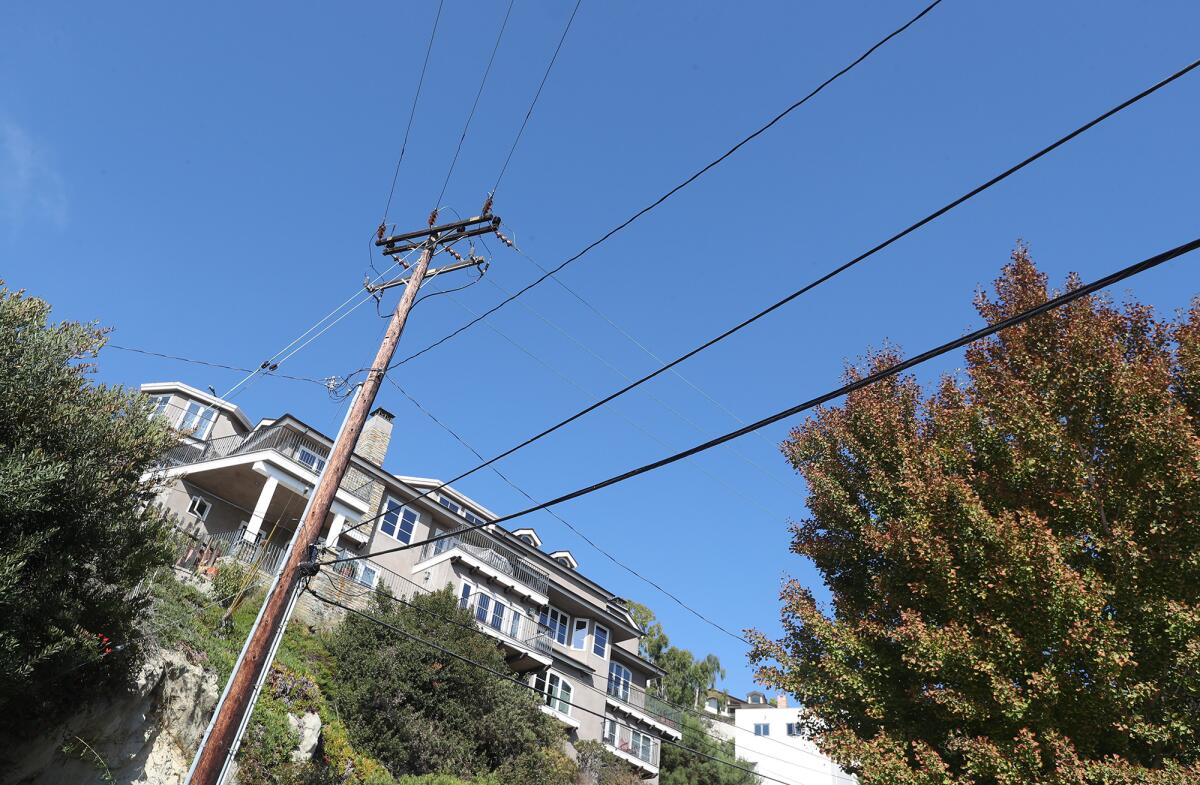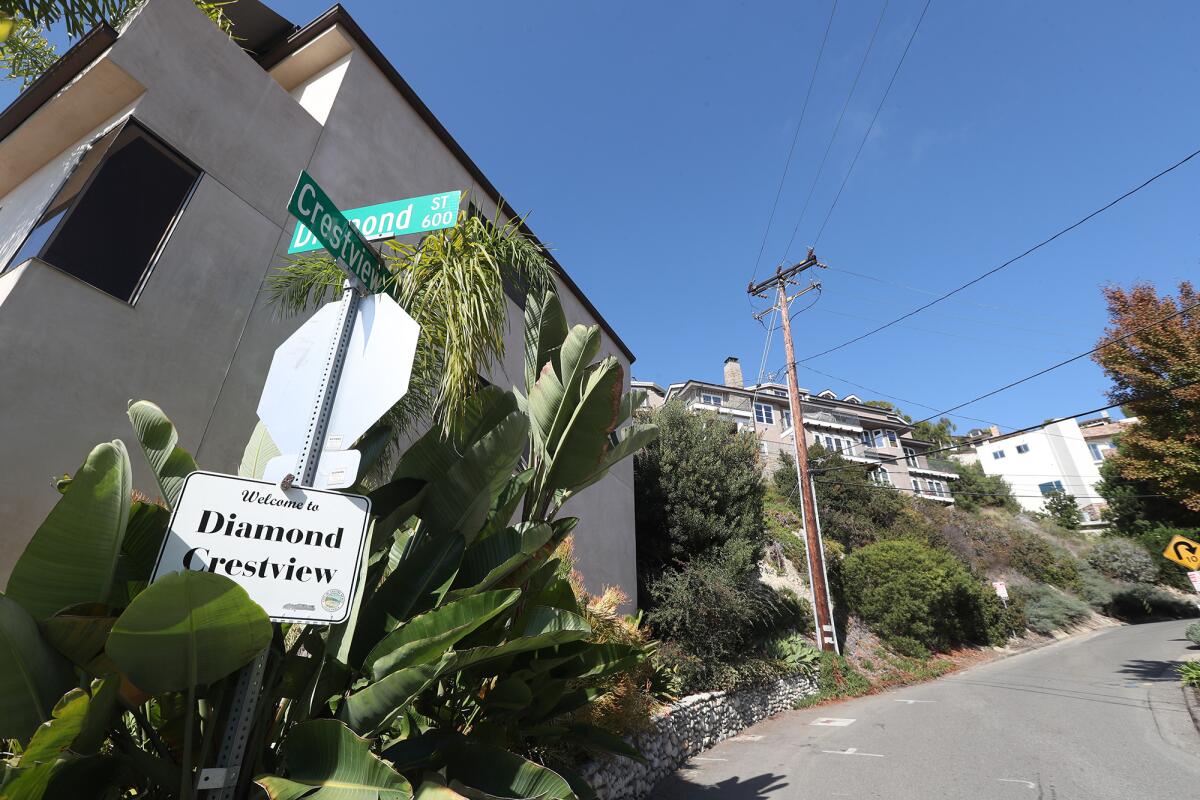Laguna Beach postpones vote on Diamond Street underground utility assessment district

- Share via
A vote on an underground utility assessment district in Laguna Beach’s Diamond-Crestview neighborhood was postponed this week, as residents have called on the city to increase its contribution to the project.
Ballots submitted by all 20 property owners within the proposed district were scheduled to be counted at the Laguna Beach City Council meeting Tuesday night, but were not. Instead, council members decided to continue the item until staff returns to the panel with an alternative that would reduce the assessments by no less than $200,000.
The Diamond Street district would see the removal of eight utility poles and more than 1,000 linear feet of overhead wires, according to Pierre Sawaya, the project manager. The estimated cost for the project is $2.15 million.
A staff report indicated the city had been prepared to contribute $204,001 from the street lighting and utility fund. Mayor Pro Tem Bob Whalen made the motion to have city staff come back with a proposal that reduces the bill sent to affected property owners in hopes that it would sway votes.
“The sense that I get is that there may be some ‘no’ votes who would become ‘yes’ votes if the assessments were lower than they currently are proposed,” Whalen said. “I think this is an important undergrounding project from a safety standpoint, given that this is sort of a single ingress and egress point. … I’d like to see it have an opportunity to pass, if it can, if it’s that close.”
A date for the final vote on the district will be determined following council approval of a new plan, Mark McAvoy, the city’s director of public works, said in an email Wednesday. The city’s total contribution would come to about 20% if the total of the assessments dropped by $200,000.

For the project to move forward, a weighted majority of the associated property owners would have to vote in favor of undergrounding. That majority would be determined by the percentage of the assessments that vote for or against the project. Each property has been assigned an assessment.
The project would be abandoned if a majority of weighted ballots oppose the formation of the district.
Concerned residents spoke to the potential danger wildfire could present for a community with limited evacuation routes.
“If you don’t underground the poles and there’s a wind-driven fire event, you could have downed power lines and downed poles that block evacuation,” Kevin Johnson, who resides within the proposed district, told the council.
Johnson, who has been leading the efforts to form the district since purchasing his property in 2015, said assessment values have gone up significantly since estimates were established in 2017. The average assessment currently stands at approximately $107,505, with the property assessments ranging from $96,228 to $120,285.
Fire safety is a rallying cry for supporters of the project, Johnson said. Figures he provided to the council by email showed that the average expected assessment in 2017 amounted to about $64,000. Johnson also advocated for the city to kick in more funds by saying there would be a general benefit to more than 130 residences that use Diamond Street as the only access point to Coast Highway.
“For Laguna, there are view considerations that are incorporated into the assessments,” Sawaya said. “So certainly, properties who do receive view benefits would see a little bit higher assessments than other properties in that district.”
Assessment engineers typically consider neighborhood aesthetics and safety concerns, too, Sawaya added.
All the latest on Orange County from Orange County.
Get our free TimesOC newsletter.
You may occasionally receive promotional content from the Daily Pilot.




